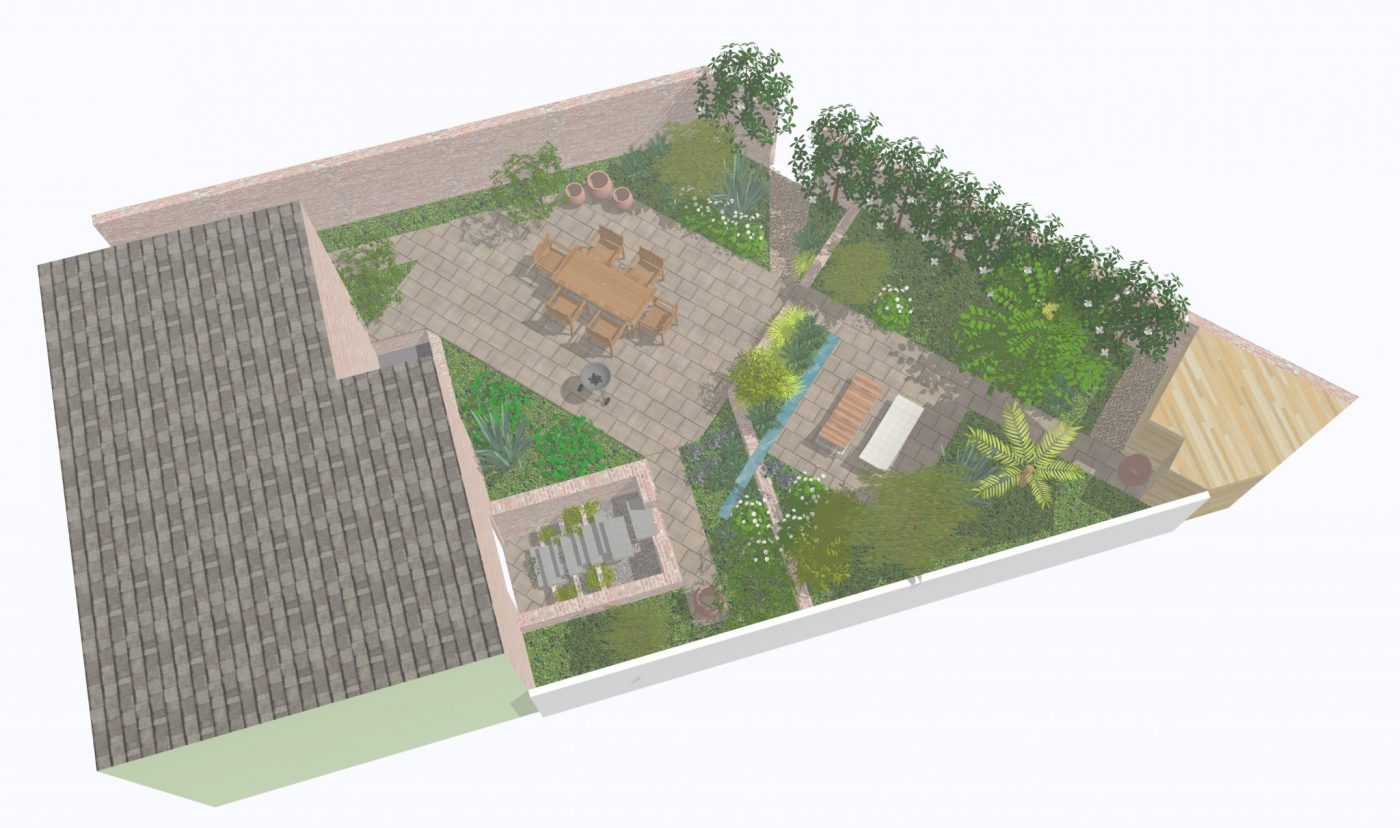
What’s most important to you and your small garden: planting? A place to sit? A place to dine? A place to sunbathe or play sport?
No matter the size of garden, the place I always start is with the question: how do you want to use the space?
You probably already have some ideas about this, but it’s time to consider this question in much more detail because often, we don’t really know how we’ll really use a space in future when it’s locked in our imagination. Often our imagination is wrong. In a small space you can’t do everything, so what stays and what goes? There are a number of key questions to ask yourself that help answer this, which I discuss below.
Join my Wild Way gardening newsletter
1) Ask yourself ‘how will I really use our garden?’
It sounds like an easy question to answer, but it isn’t. Most of us don’t sit around analysing how we use indoor rooms and spaces outdoors.
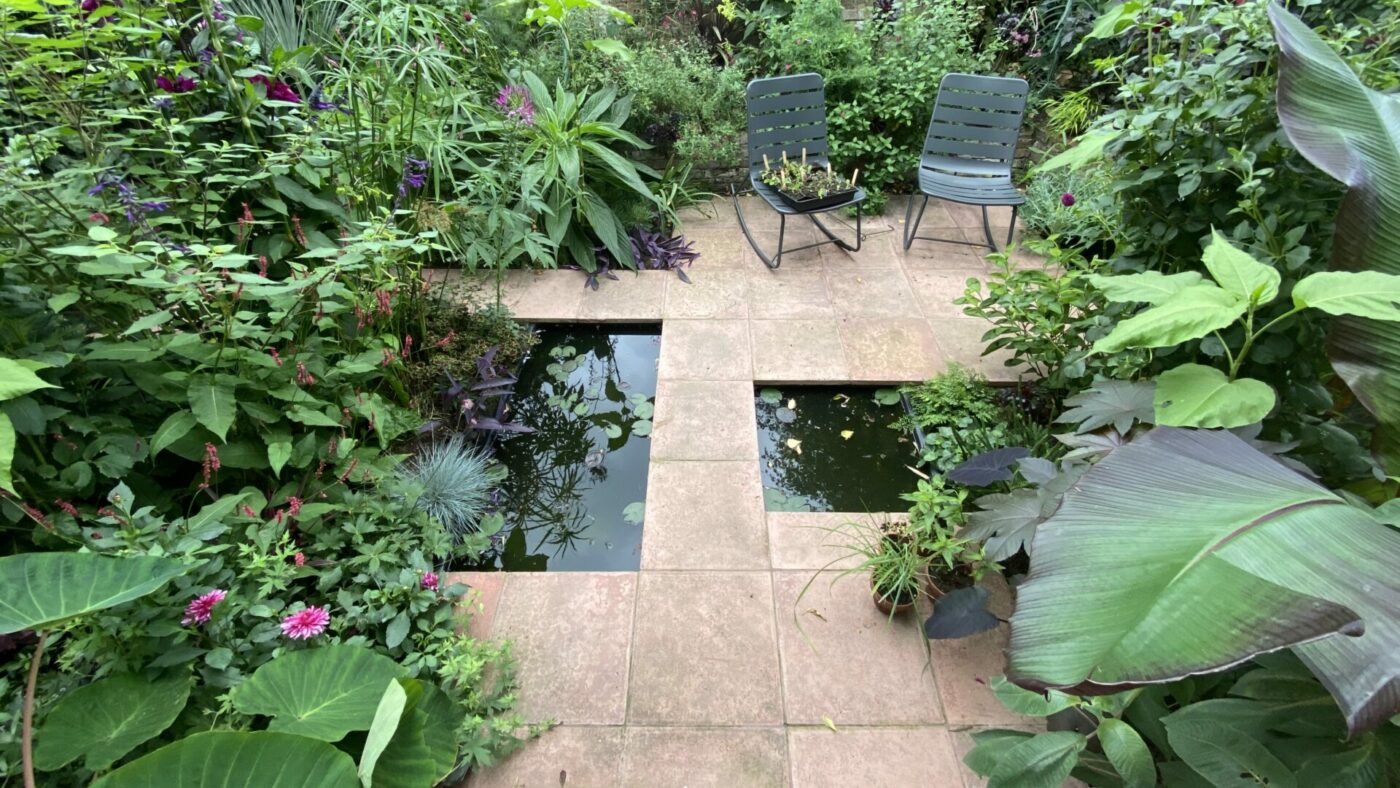
A place to start with how you will use the garden is to first consider, how many people will use it? What will they use it for? Day-to-day is it just yourself, or two of you, or a small family? Will you have guests over regularly for dining outside? Or will you not really use it with guests? Do you need an area for big family gatherings or for parties to spill out into? Or in reality is that unlikely to happen except for a single one-off event in your mind that reaaally, you could host elsewhere?
I would always prioritise the day-to-day use. Start with how you will use it. Which in my experience with designing gardens, is for the household to use it every day, with a small number of regular guests and the occasional bigger gathering for outdoor dinners. So that might work out as:
- 1 – 2 people everyday
- 4 – 6 people regularly for dinner in the warmer months
- 8 – 10 people occasionally for bigger gatherings and meals max.
You’ll know your situation better than anyone. It’s worth considering how you want your garden or outdoor space to be used in future too. Do you use the space now yourself, but want to make sure there is an area for hosting to increase the amount of socialising you do? Some people with younger families might need space for play and running around. I’ll cover off some of these uses in more detail below.
Once you know who will use the garden and how, that will inform where you start, which is the size of usable space, e.g. how big a table you need and how big a patio you will need for that. Be honest with yourself at this point, some of my garden clients were good at admitting that while big gatherings and BBQs were a nice dream, in reality were unlikely to happen.
2) Dining vs seating: what type of seating area is best?
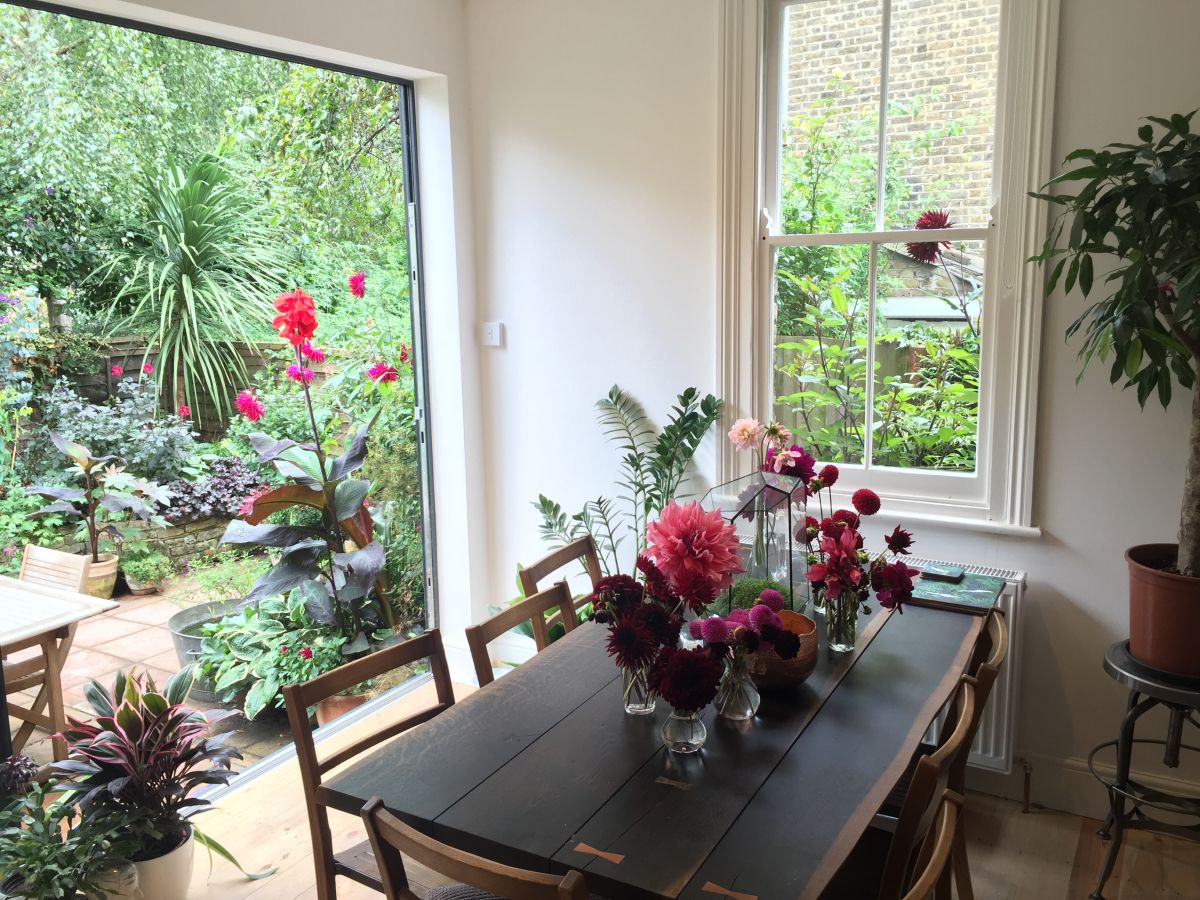
Even if you have room for both an outdoor table and a casual seating area, ask yourself do you really need both? We had our indoor dining table next to the bifold doors of our old flat and found we literally never used the outdoor table (except for me to grow seedlings on…) so we removed it giving us more space outside. Small gardens and balconies are often joined these days by big bifold doors making them feel like the same outside area.
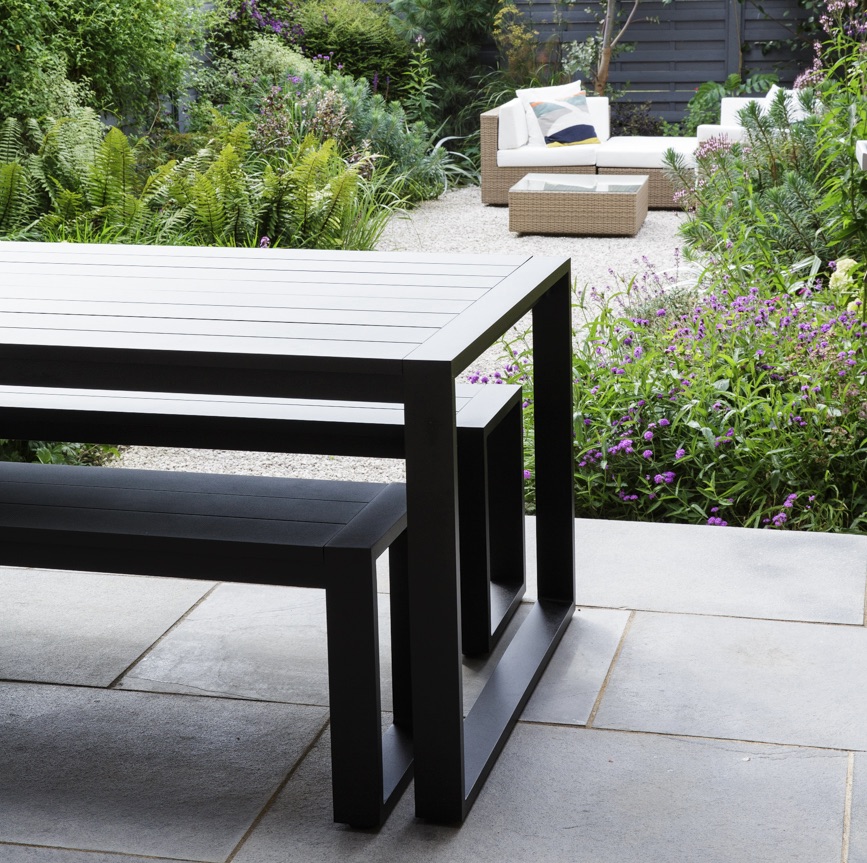
If your indoor table doesn’t feel part of the garden like that and most of your outdoor use will need a table, for working on, eating, hosting dinners etc, it might be worth prioritising the table. In an ideal world, I think it’s first worth having a dining table that is either in the garden or immediately near it inside large bifold or patio doors, plus an additional more relaxed seating area to move to.
3) Working outside
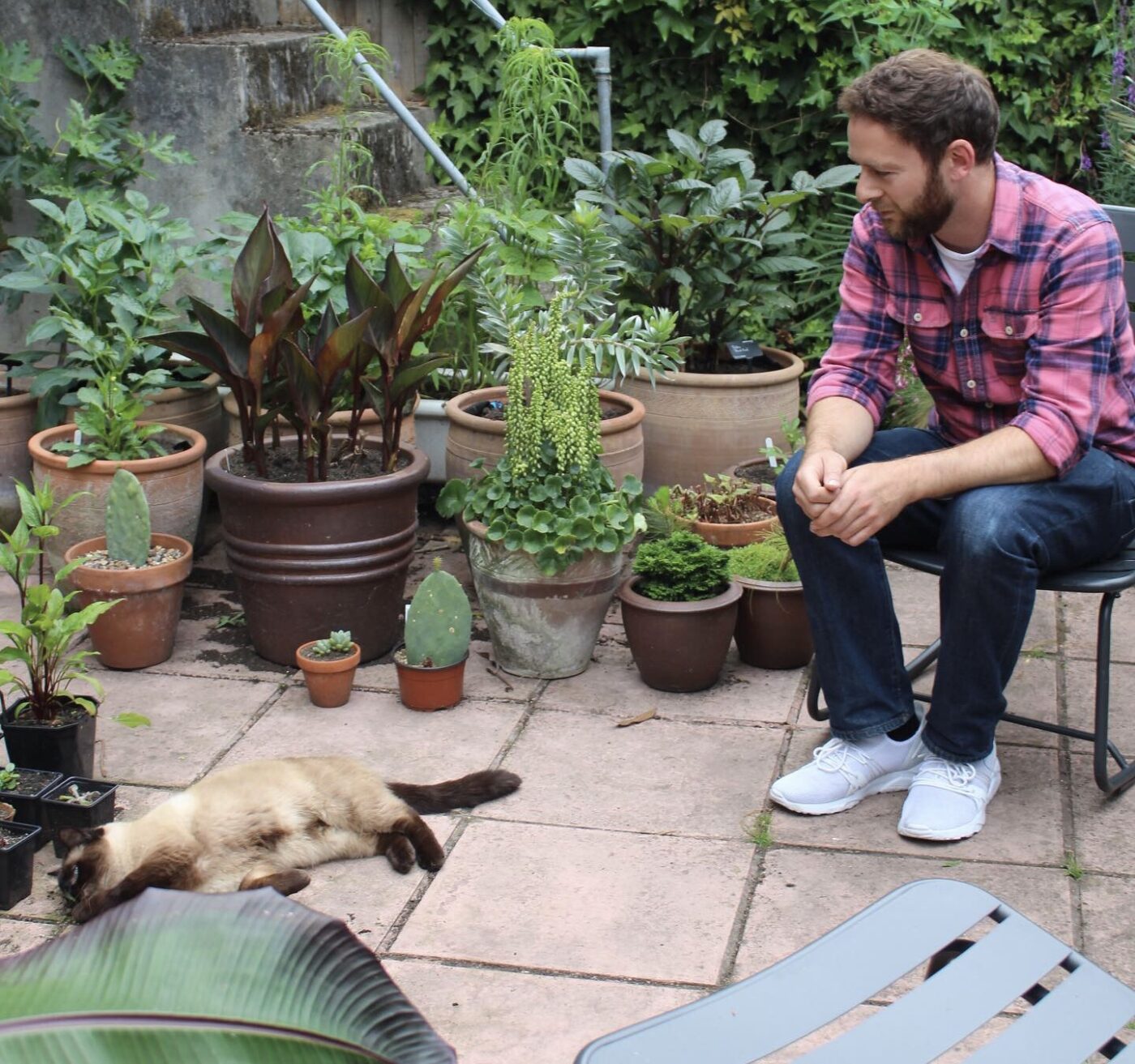
This isn’t talked about that much but I would put this at the top of my list for things to be able to do outside: working. If you work from home, either occasionally or all the time, taking your laptop outside is really enjoyable. To work outside you need a chair and probably a table, though I found working from my lap on lounge chairs was fine. You’ll probably need an outdoor power supply near that furniture and make sure your wifi reaches it too, though tethering to our mobiles and laptop batteries makes these two things less necessary. Some shade to stop sun glare on screens is important. Whether you need to prioritise the table or a lounge area to work from is down to your preference and the size of your space. A good dining table with a power supply, wifi and some kind of shade makes an ideal outdoor desk.
4) How big a table? How big a seating area?
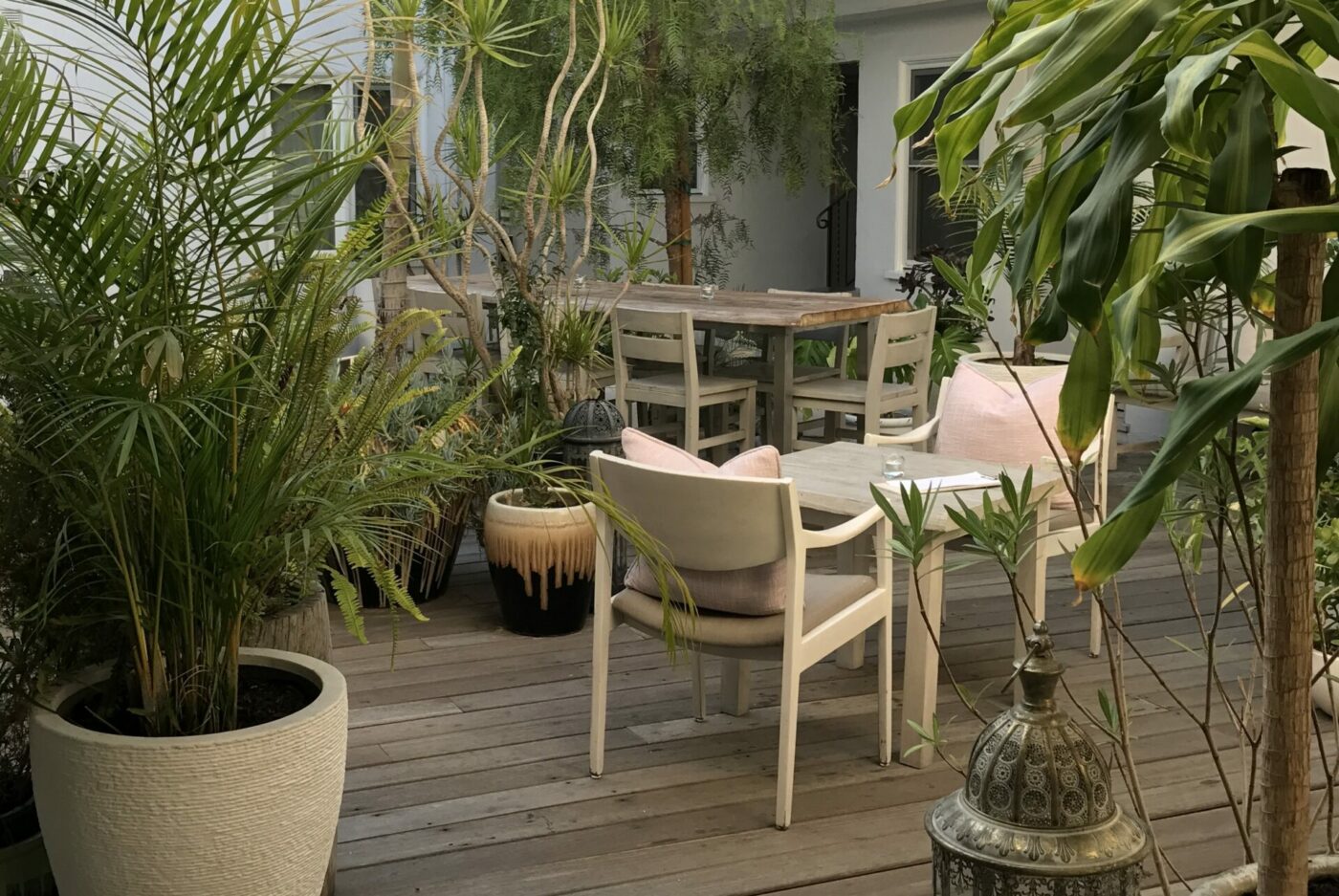
Deciding how big your dining and seating areas are is the point I always start with because it defines how big the areas around them are. Really give it some thought and don’t just buy for the biggest scenario – check if you really need a 12 person table, or is it going to be 4 – 6 people 95% of the time. Don’t sacrifice other things in your outdoor space for that 5% of time when more people might visit once every two years. Prioritise yourself. Could you go with a smaller table and have an additional fold out table for that special occasion? Do you just say ‘you know what, for the one-off special occasion we’ll just have to go to a nearby pub or restaurant’.
Tables come in different sizes, so when you know the number of people you need to seat, research online for different tables and note down their size. Add a metre around the outside of the table because ideally, you need that to be able to push chairs out to get into them! If you’re tight on space, benches use less room, though often don’t have backs, reducing the comfort time for sitting on them. Which is where a second seating area may be useful if you have space.
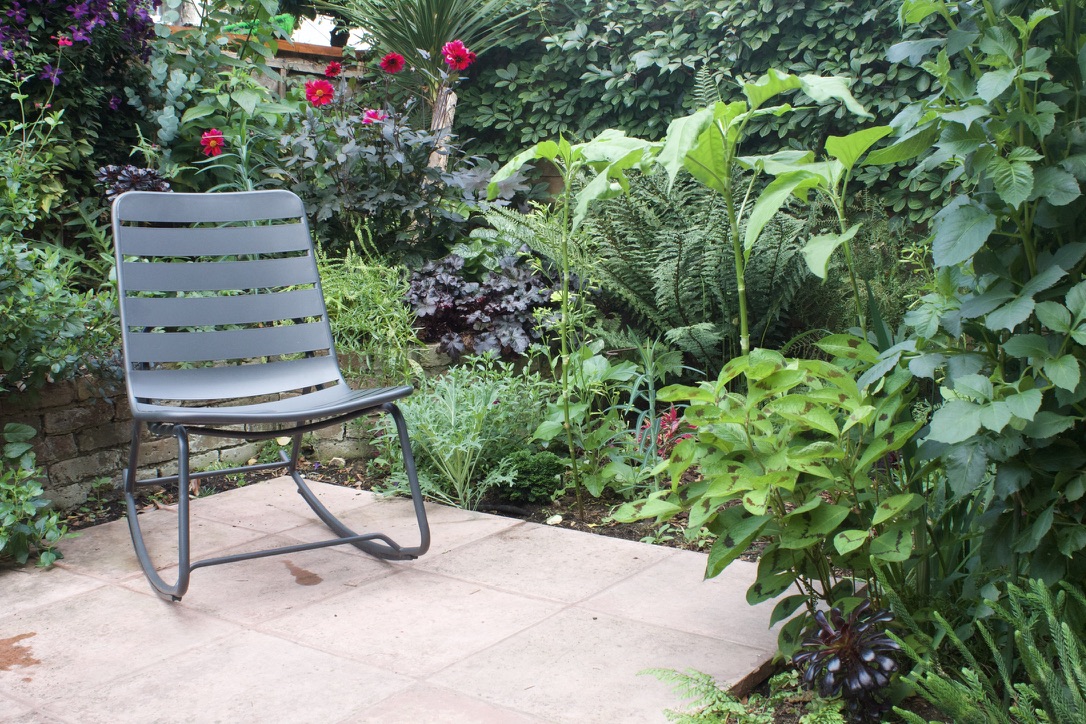
Lounge seating areas with outdoor sofas or low loungey chairs are among my favourite things in gardens. With the right lounge chair that isn’t too low, I believe it gives the maximum ergonomic comfort. In our old garden we had inexpensive rocking chairs that were perfect, and there are lots of other chairs like this – many with cushions that are really comfy. I found they were great for reading a book or for using a laptop over a number of hours. Because they’re a bit lower than a dining table, you feel more immersed in the garden too.
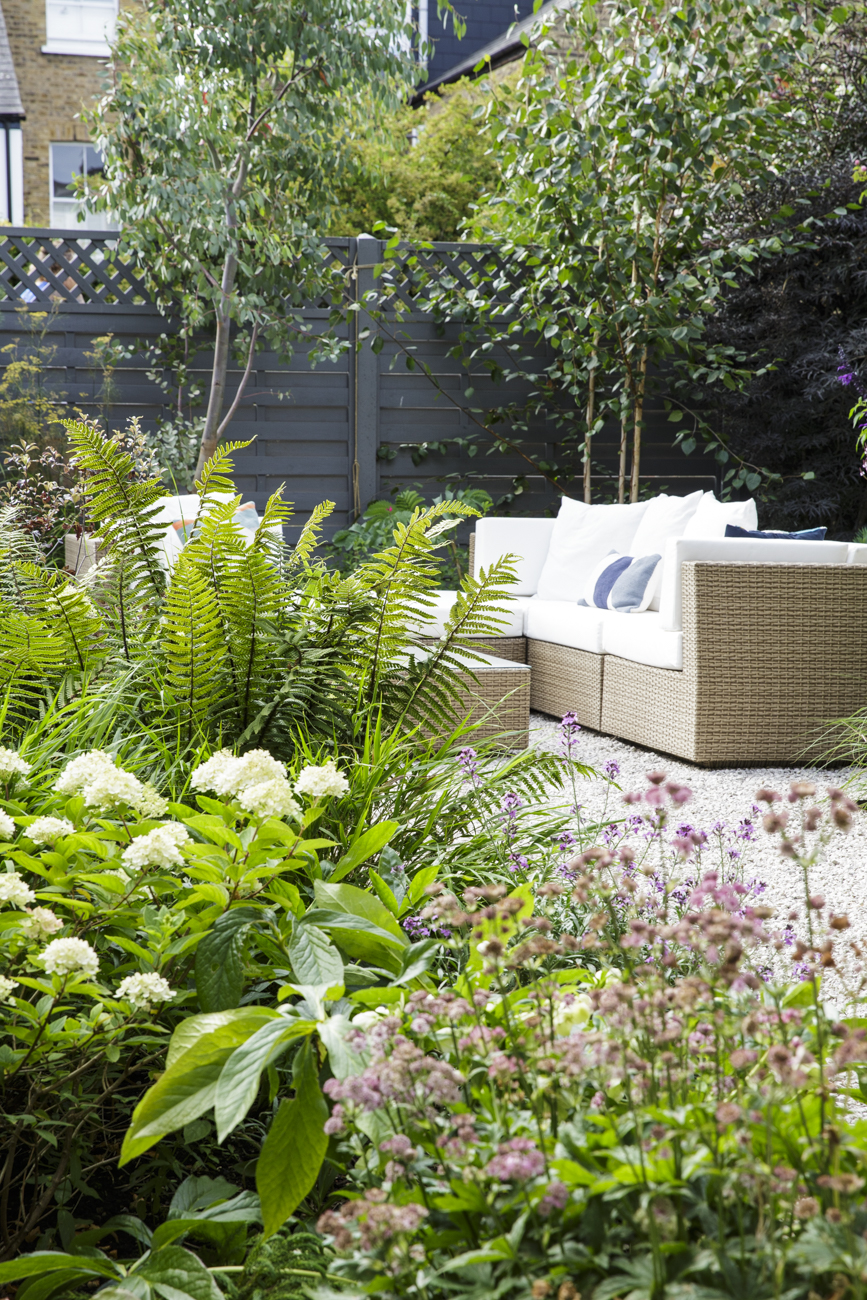
Outdoor sofas are a really good option, and if you really enjoy lying down, a sunlounger.
5) What about BBQs, outdoor kitchens and other stuff?
In a small garden, space is at a premium, so I would always ask, do you really need to cook outside? Especially if the kitchen is close to the garden. If you really enjoy BBQs and prioritise that high on your list, I’d say go for it and sacrifice a lounge seating area to keep the dining table too. An outdoor kitchen is wonderful but a luxury in a small space. Would an outdoor work surface be enough? If the kitchen is next to the garden, do you even need that, or is it just a dream?
If you’re a keen cook and host lots of outdoor dinners, then an outdoor kitchen to be among your guests while cooking may jump up the priority list and you could style your outdoor space for this. An outdoor kitchen diner with herbs to pick? Wonderful.
6) Do you need storage and compost bin?
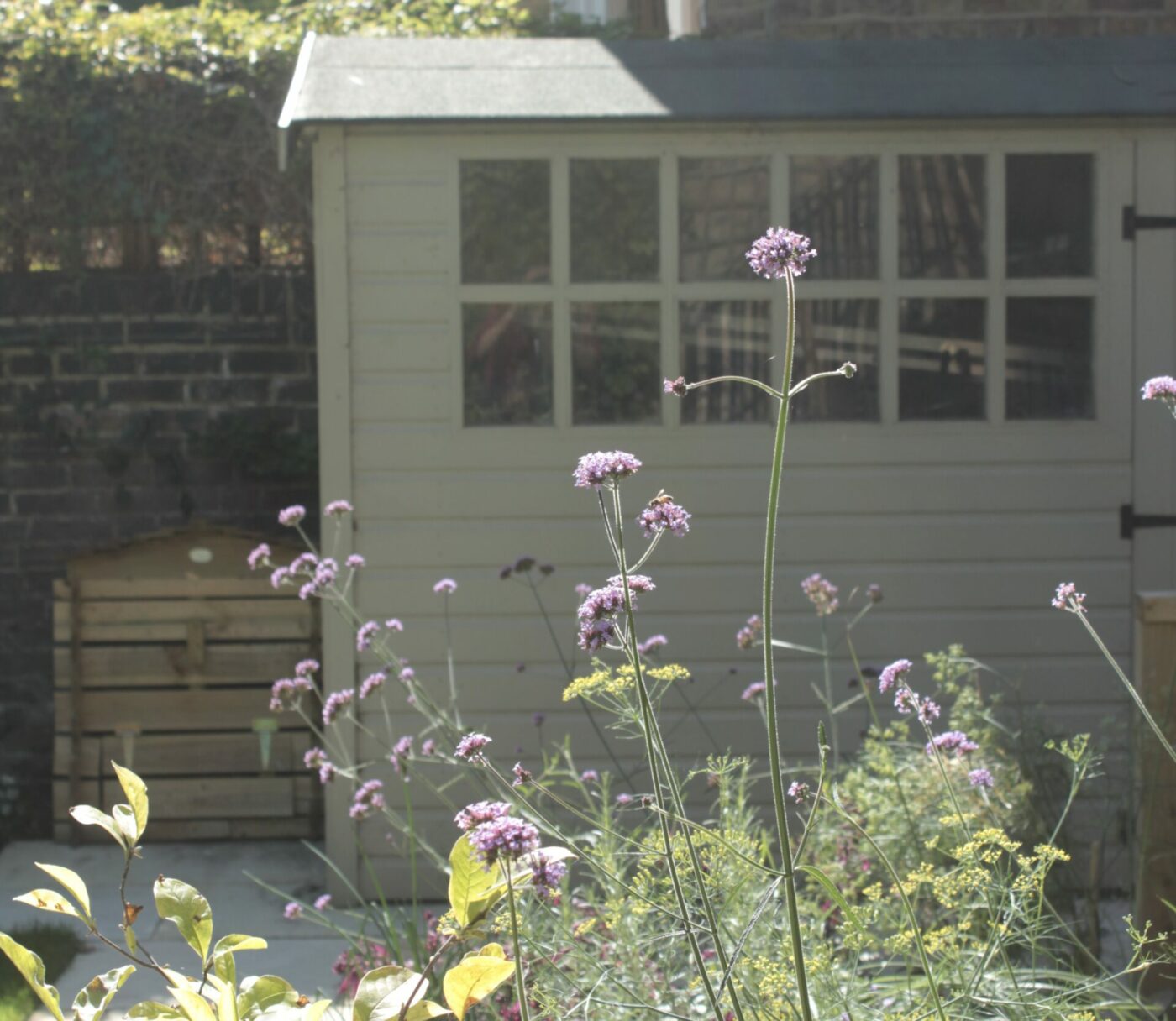
I’d say every garden needs some storage for at least tools like trowels, a bag of compost etc. Keep this to the absolute minimum. If your garden is small and you’ll never need to use a spade or rake, don’t buy them. You can build storage into seats and benches, and tiny outdoor cupboards are widely available.
In an ideal world, every garden would at least have some kind of compost bin for waste plant material to be turned into homemade compost. In really small spaces, you could use small hot bins or a worm composter. However, if you only have a tiny balcony or patio, or don’t produce enough plant material to make a meaningful amount of compost, don’t feel bad about not having these. In our old garden, most of the time I would cut up dead perennials into tiny bits and chuck them on the ground around them to compost into the soil naturally: the cut and chuck.
7) Lawns and space for children to play
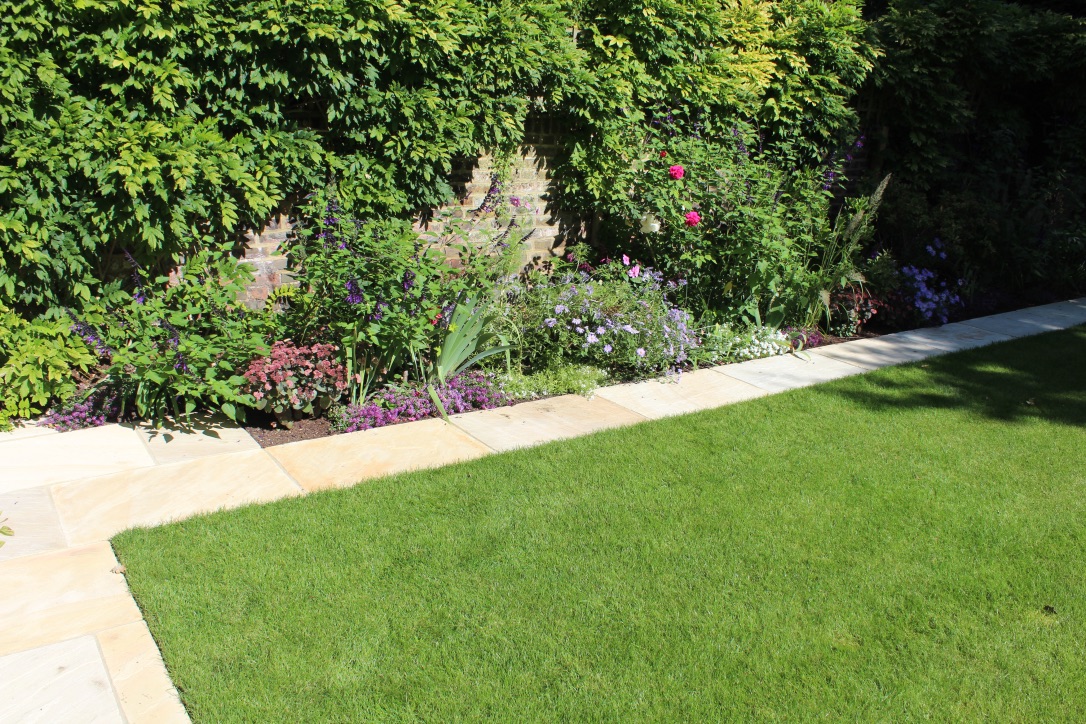
If you have young children, outdoor space for them to play will no doubt be high on your list unless you live very close to a park or playground. If there is a park at the end of your road, I would seriously consider if that is actually enough. I know lots of young families I’ve designed gardens for who put in lawns but actually went out most of the time to the park, ending up using the lawn for planting or something else.
8) Planting space
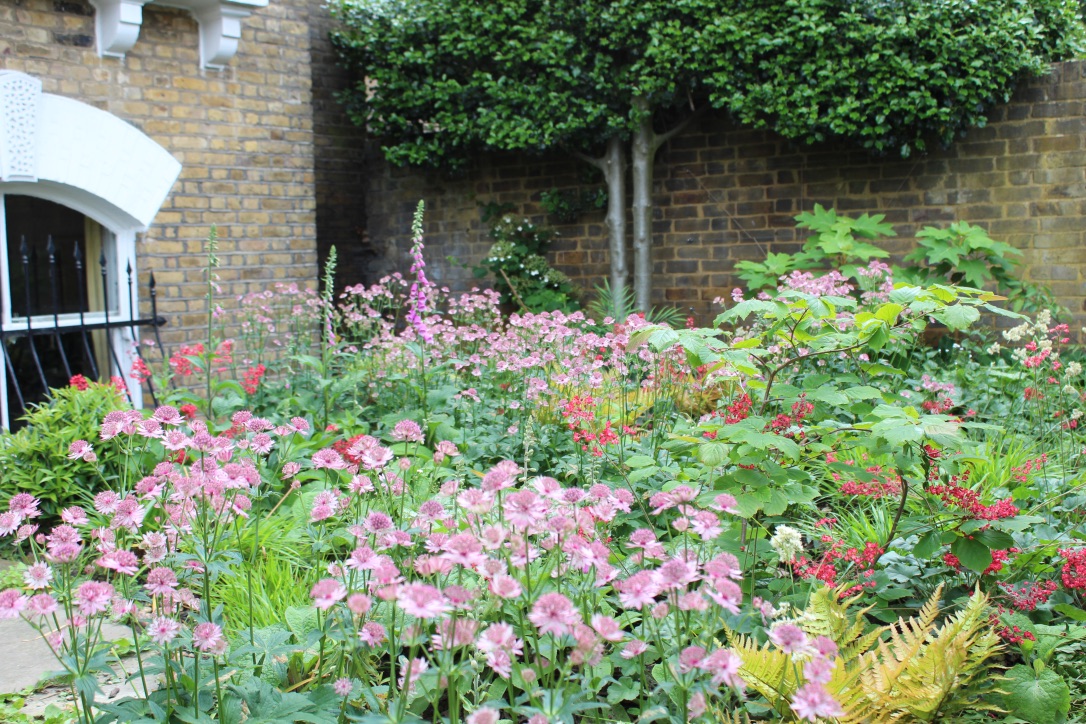
I deliberately put this at the end of the list because a) that’s the sensible thing to do and b) if you’re like me, you probably wanted to start with the planting, but everything else is where you should start really. Once you’re informed about how you will use the space yourself, you can work backward to see how you can now compromise to get all of the plants you want in too.
Planting areas should always be between 2 – 4 metres deep from front to back – people are always amazed when I say this because we’ve grown used to teeny tiny miniscule strips along the edges of gardens and then wonder why they don’t look like the magazines. News flash: nothing is going to grow in that little space shielded from the rain by fences or walls except perhaps climbers.
Most perennials grow to 50 – 70cm diameter, shrubs are between 1 – 4m diameter. Forget what you see in nurseries, those are young potted plants, most will grow much bigger. So if you want those voluptuous plantings you see in National Trust gardens or at the Chelsea Flower Show, trust me when I say you need to be aiming for planting areas that are at least 2m deep.
Of course, that isn’t always possible in small gardens, some balconies aren’t even 2m deep themselves! But start with that mentality to make sure you do not make the planting areas too small. Research some plants to see what size the grow to. My 10 step guide to selecting plants like a pro offers much more info on getting this point right.
The reason I’m stressing this is because people go too small with planting areas all the time and it’s important to now consider, can you make sacrifices with your seating areas? Can you go for a smaller table to fit both the planting and the seating in?
If you can’t and planting space really is tight, rethink what you will plant. Throw the dreams of big borders out the window and instead focus on perfecting the art of climbing plants, which give maximum plant for minimum floor space. Though their roots underground will be as big as the plant aboveground so fit them into suitable pots if not in the ground. I always prioritise fewer but bigger pots than lots of small pots. Small pots have less compost capacity and therefore need watering much more frequently.
I’ll discuss planting in more detail in a future guide, until then my book A Greener Life is perfect for planting in small garden design.
Part one: Small garden design: become familiar with your space













